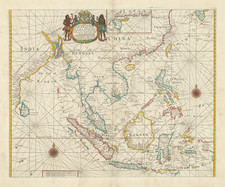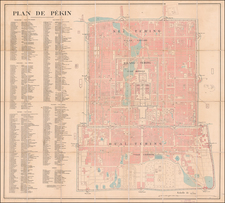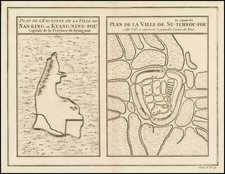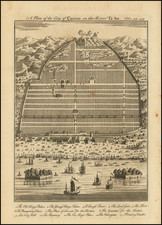Rare second state of Joseph Huddart's seminal mapping of the lower part of the Pearl River, published here by Laurie & Whittle in 1794.
First published in Sayer & Bennett's East India Pilot, the map is superbly detailed in its coverage of the approaches to Canton from the Annunghoi Fort to Dane's Island, Whampoa and the Foreign Factories at Canton. The map includes an extraordinary set of sailing instructions, drafted by Joseph Huddart.
Joseph Huddart (1741-1816) was an important and influential English Captain, hydrographer, chart maker, inventor and entrepreneur. Born into the a fishing trade, he first served as seaman then as a master, in 1762 taking command of the sloop Allonby, transporting cured fish to Ireland for the supply of the West Indian markets. His first ship, the Patience, was designed and built by Huddart himself and launched in 1768 for the North American trade.
In 1773, Huddart joined the East India Company, sailing as Fourth Officer aboard the York, bound for St. Helena and Bencoolen. During the course of this voyage he made detailed scientific observations and surveys of the West coast of Sumatra. In 1777, Robert Sayer published Huddart's surveys of the coasts of Sumatra and engaged him to carry out a survey of St. George's Channel, which was completed in summer 1778. His chart of St. George's Channel proved a masterpiece of accuracy and established Huddart's financial fortunes and his reputation as one of England's foremost hydrographers.
In the latter part of 1777 he re-entered the service of the East India Company and was quickly named Captain of the Royal Admiral. For the next decade Huddart sailed the waters between India and China. In 1786, his survey of the Tigris (Pearl River) delta was published by Sayer & Bennett.
On his retirement from the sea in 1791 he was much in demand for his advice on harbor improvements, becoming one of the first directors of the East India Dock Company in 1798 and laying the Dock's first foundation stone in 1804. In 1791 he was elected a Fellow of the Royal Society and for 25 years he was one of the Elder Brethren of Trinity House. His scientific acumen resulted in a number of important inventions, including the three arm protractor for hydrographers and the use of high water marks for the London docks, still in use until the 1960's. Perhaps his greatest invention however lay in the development of steam-driven machinery for laying up and binding rope, which he commercialized into a highly lucrative business.
Joseph Huddart (1741–1816) was a distinguished British hydrographer, engineer, and inventor known for his significant contributions to the fields of coastal surveying and rope manufacturing. Born in Allonby, Cumberland, Huddart displayed a natural talent for mathematics and mechanics from a young age, constructing models of mills and ships based on descriptions he read. Following his father's death in 1762, he took over the family's fish-curing business and began to explore the world of navigation and surveying, commanding a brig trading to Ireland and the West Indies.
Huddart's skills and innovations caught the attention of influential figures, leading to his service with the East India Company. Here, he made four voyages to the East as the commander of the ship Royal Admiral, during which he surveyed the coasts of India and Sumatra, as well as St. George's Channel. His maritime career also included surveying among the Hebrides. In 1791, his contributions to science and navigation were recognized with his election as a Fellow of the Royal Society (FRS) and his appointment as an elder brother of Trinity House, where he oversaw lighthouse construction and navigation improvements.
Apart from his surveying work, Huddart made a fortune from inventing a method for improving the manufacture of rope. This method evenly distributed stress across the fibers, enhancing the strength and reliability of the ropes. He utilized steam power to automate production, establishing Huddart & Co. in Limehouse for this purpose. His invention significantly impacted the maritime industry, leading to his wealth and enabling him to purchase estates in Wales.
Joseph Huddart died in London in 1816 and was buried in a vault under St. Martin's-in-the-Fields. He left behind a legacy of innovation in both hydrography and rope manufacturing, contributing to the safety and efficiency of maritime navigation and industry.











![Province de Chen-Si [Shaanxi Province]](https://storage.googleapis.com/raremaps/img/small/95545.jpg)


